NORTHERN HARDWOODS
"Northern hardwoods" is a general term that refers to an association of
broadleaf trees that occur in various combinations throughout the eastern and northern
United States. Typical tree species include sugar maple, basswood, beech, hemlock
(a conifer), yellow birch, American elm, ironwood, white pine (a conifer), and red maple.
Coarse, sandy soils are porous, have a low water-holding capacity, and
are often acidic. These types of soils usually support trees such as oaks and hickories--or in northern Michigan, jack and red pine with a shrub
layer of blueberries. Soils of intermediate texture (loams), however, usually
support a wide variety of species, but shade-tolerant "northern hardwoods" such
as beech and sugar maple (below) often dominate these sites. The term
"shade-tolerant" implies that the trees are able to reproduce (i.e., their
seedlings can survive) in the shade of the parent plants. Many northern hardwood
stands are quite dark, as the two images below illustrate.
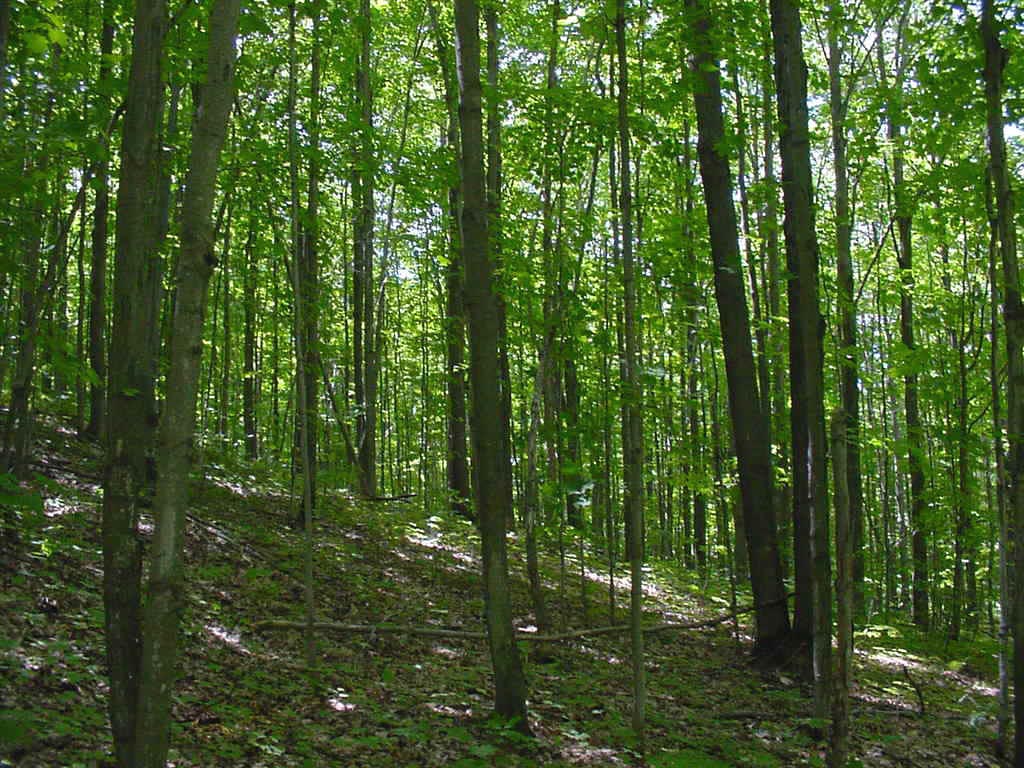
Source: Photograph courtesy of Randy Schaetzl, Professor of Geography -
Michigan State University
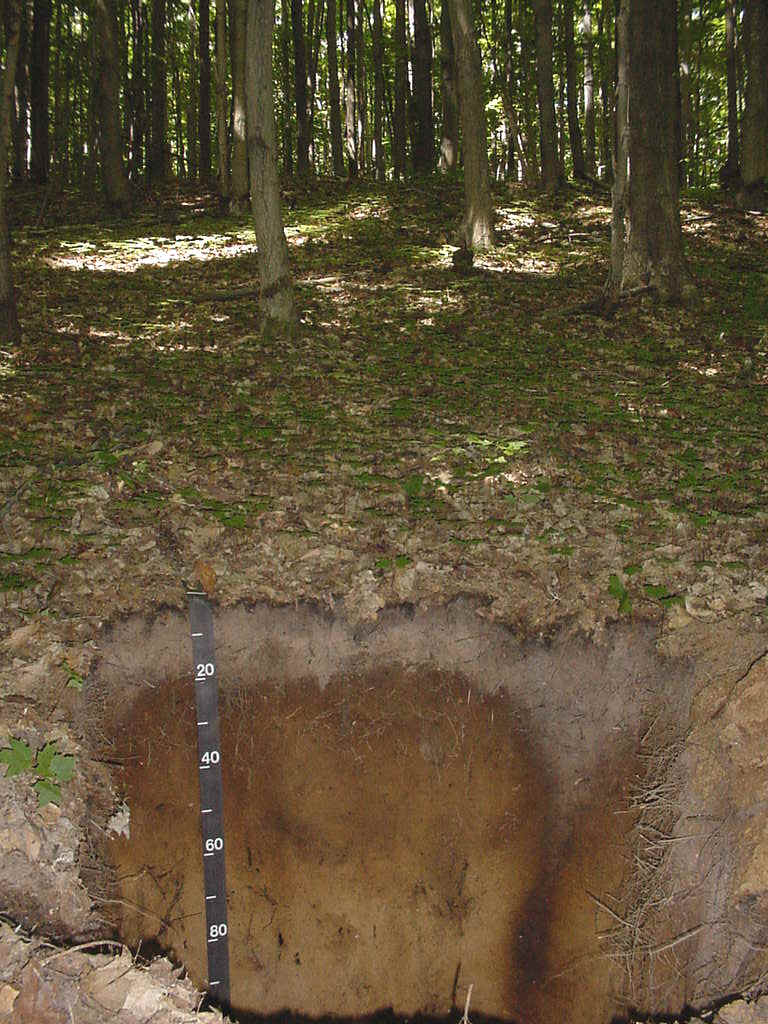
Source: Photograph courtesy of Randy Schaetzl, Professor of Geography -
Michigan State University
What is Shade Tolerance? It is the capacity of a tree species to survive in
light of low intensity, or the relative capacity of a species to grow under low light
conditions and high root competition (in the understory environment).
In the northern Lower Peninsula, hemlock and yellow birch may prevail along with beech and
maple, and in the western Upper Peninsula, where there are no beeches, red oak and
basswood are important also. Forest assemblages composed of maple, beech, hemlock,
birch, and other broadleaf tree species are referred to as "northern hardwoods"
("Laurentian mixed forest" on the map below).
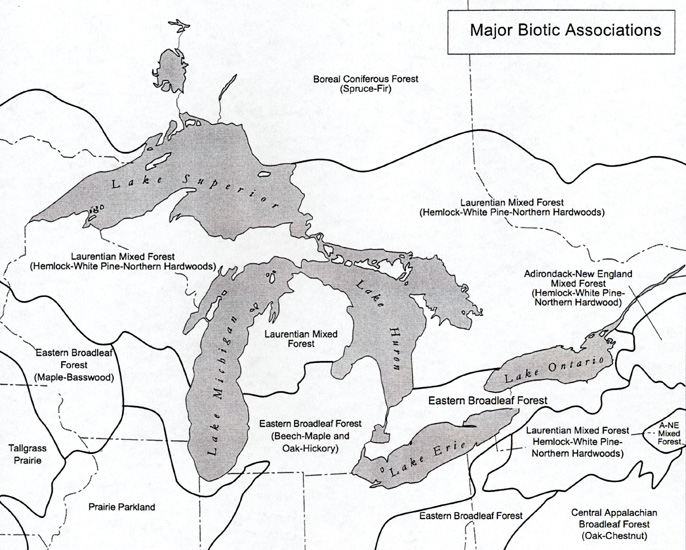
Source: Image courtesy of Randy Schaetzl, Professor of Geography - Michigan
State University
A less conspicuous forest gradient exists from the central to the western portions of the
Lower Peninsula. Woodland composition in the central Lower Peninsula is a mosaic of
beech-maple mixed with some oak-hickory communities (on sandier soils). Westward through
the state, however, the more drought-sensitive beech-sugar maple forests become more
common, and north of about Muskegon, they are mixed increasingly with yellow birch and
hemlock. Close to Lake Michigan, these communities may be found even on sandy soils that
in the interior could support only dry, oak-hickory-pine
forests. This westward increase of beech, sugar maple, and other drought-sensitive
associates may be related to climatic modifications by Lake Michigan. Augmented winter
snowfall (lake-effect) and, on the sand dune sites
near the water itself, lower summer temperatures may combine to create a more generous
amount of water and thus permit these species to compete near the lake on coarser soils
than they could flourish on in the interior. This pattern is particularly evident near the
shoreline in the central and northern Lower Peninsula, where dune soils consisting of more
than 90% sand may support a mixture of mesic (moderately moist) forest species along with
boreal elements (jack pine, balsam fir, white spruce).
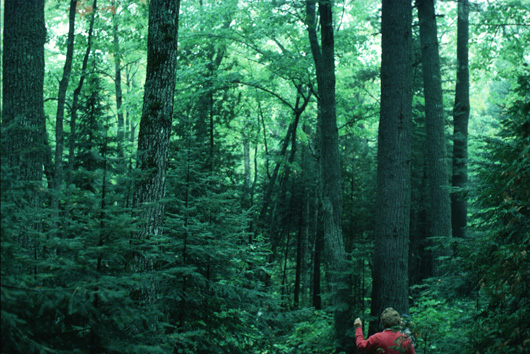
Source:
Photograph courtesy of Randy Schaetzl, Professor of Geography - Michigan State
University
Beech (leaves shown below) and sugar maple (ditto) are present on the moister upland
forest sites (which usually have heavier soils) north of the tension
zone, but are associated in this region with hemlock and yellow birch, as well as with
some of the associates that are characteristic farther south. Locally, balsam fir and
white spruce are minor constituents. These communities, too, may have been heavily
disturbed by lumbering, leading to dominance by aspen, red maple, white birch, and sugar
maple depending on site factors.
BEECH
MAPLE
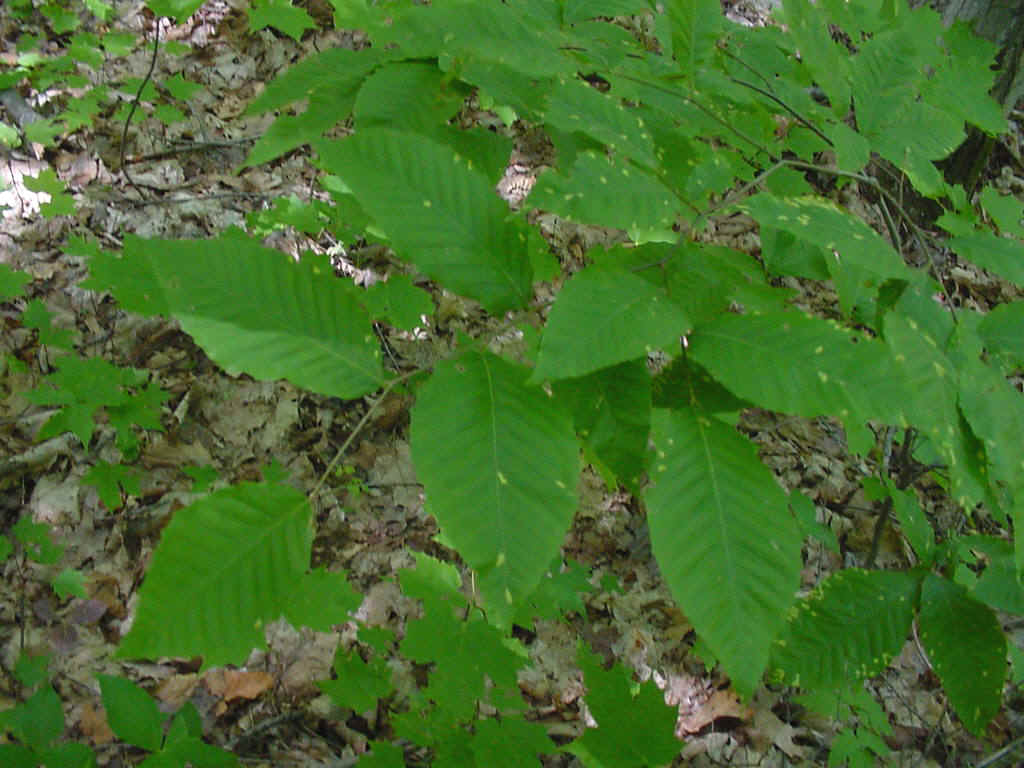
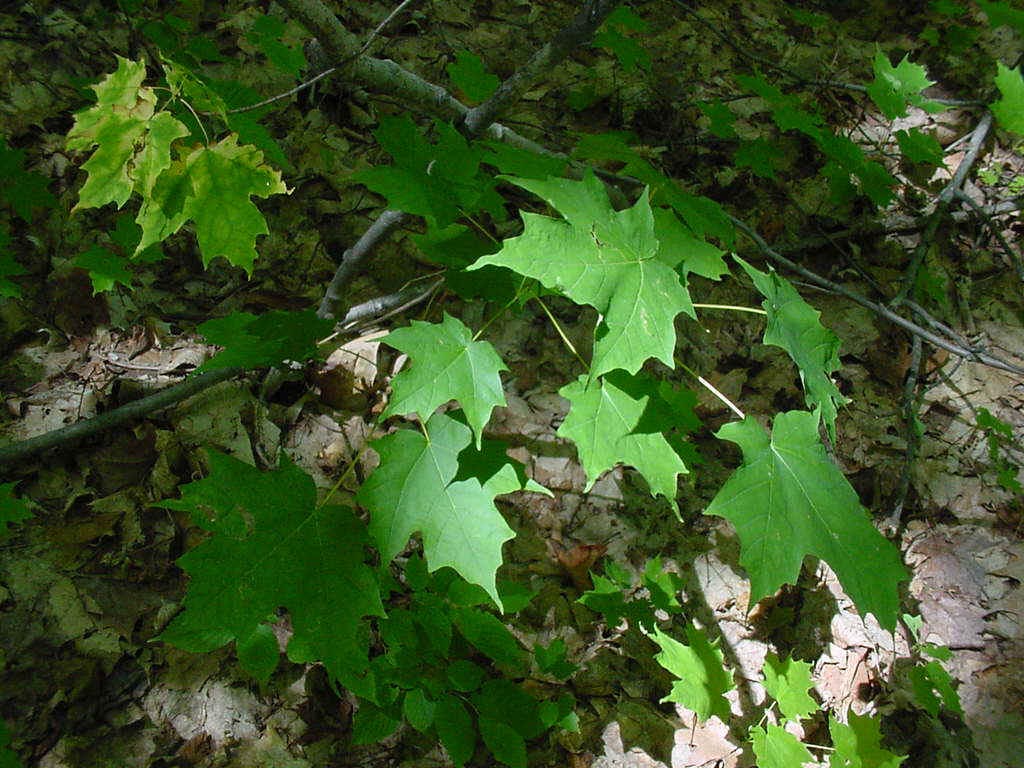
Source:
Photograph courtesy of Randy Schaetzl, Professor of Geography - Michigan State
University
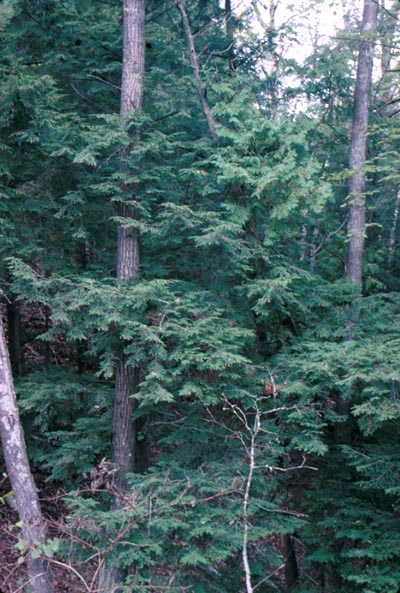
Source: Photograph courtesy of Randy Schaetzl, Professor of Geography - Michigan State University
Source: Photograph courtesy of Randy Schaetzl, Professor of Geography - Michigan State University
Spruce trees are recognizable by their short needles, which have rounded ends, and by
their cones, which hang downward. Spruce makes up a small part of the mixed forest
associations of northern Michigan, usually on wetter or colder sites.
Much of the topography in the western Upper Peninsula is controlled by bedrock; that is, the hills and valleys consist of rock rather than of loose glacial debris like most of the remainder of the state. The associated upland forests are similar to the beech-maple stands discussed earlier except that beech is absent and its place in the canopy is taken by other associates, especially yellow birch. Scattered white and red pines are more common. Excellent examples of this type of forest can be seen in the Porcupine Mountains and Tahquamenon Falls State Parks. Heavy logging of these forests has led to extensive mixed stands of maple, white birch, quaking aspen, and balsam fir. Similar upland forests, with the addition of beech, are found in the eastern Upper Peninsula. Taken as a unit, however, this region differs from the western Upper Peninsula in that the wetlands cover a far greater proportion of the landscape.
Source: Photograph courtesy of Randy Schaetzl, Professor of Geography -
Michigan State University
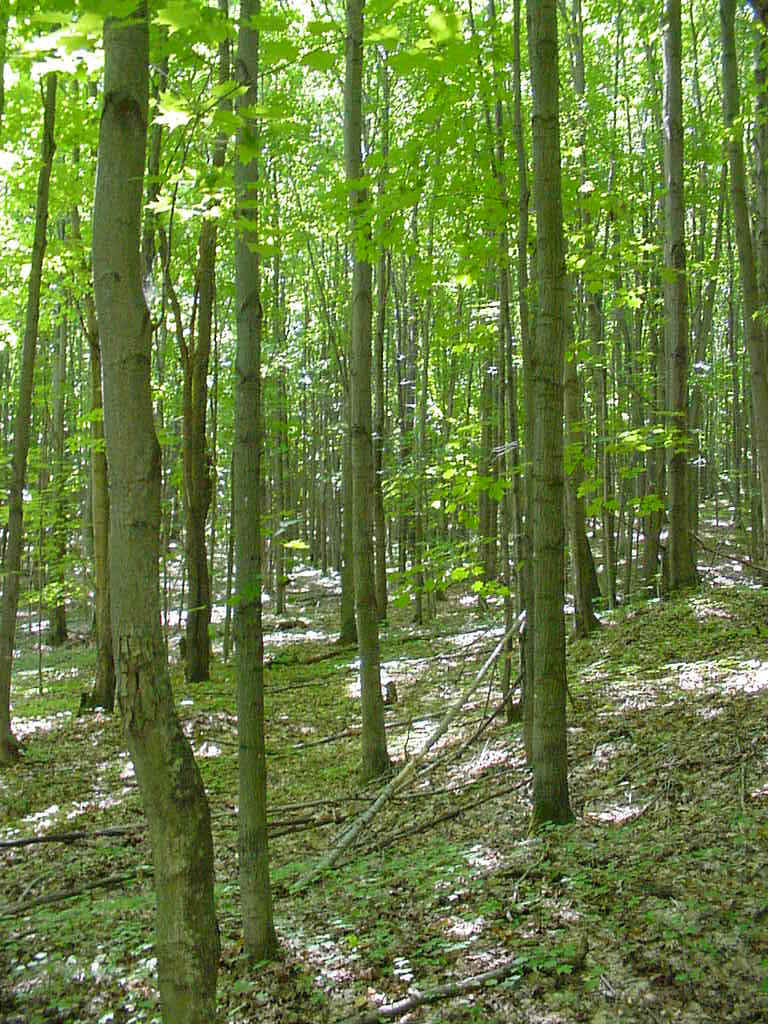
Source: Photograph courtesy of Randy Schaetzl, Professor of Geography - Michigan State University
Parts of the text on this page have been modified from L.M. Sommers' book entitled, "Michigan: A Geography".
This material has been compiled for educational use only, and may not be reproduced without permission. One copy may be printed for personal use. Please contact Randall Schaetzl (soils@msu.edu) for more information or permissions.